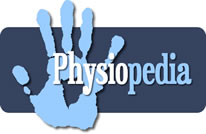Well, I'm back from my 4,000 mile drive across the US midwest and northwest. Had a great time seeing family and visiting new towns and areas of the US. Very beautiful and often time spectacular. Today I will introduce a short series on the history of post World War I Physical Therapy History. I feel it is very interesting to see our roots and understand why some aspects of our profession are the way they are.
...women leaders of the American Physiotherapy Association (APA) invited Ray Lyman Wilbur, then president of the AMA, to give the keynote address at the national physiotherapy conference. APA president Dorothea Beck enthusiastically introduced Wilbur to the stage, assuring him that it was the goal of her association to “give the medical profession a band of trained women whose ideals, personality, and technical training are all that the physicians and surgeons of the American Medical
Association can wish.”
The APA’s congenial relationship with Wilbur and the elite men of the AMA complicates the typical historical narrative of professional antagonism
between the sexes during the 1920s. Physiotherapy represents a different kind of female professionalism—one that concerned itself more with achieving autonomy from other white–collar women than it did with gaining independence from white–collar men. Other female–dominated health occupations that arose alongside physiotherapy during the war, such as occupational therapy and dietetics, drew support from medical men. But as occupations steeped in the womanly spheres of arts, crafts, and home economics, these other professions also achieved legitimacy through the backing of women’s charity networks. By contrast, physiotherapists did not seek support from women’s clubs or female associations for professional uplift; rather, physiotherapists legitimized their profession almost solely by association with the medical profession.
We see early on that the PT profession banked it's success on allowing themselves to be partially "controlled" by the AMA. We have been fighting ever since. Where professions like massage therapy, ATC, DC's fought for legitimacy from public opinion, PT's have become, possibly, forever entangled with the AMA.
This has allowed for greater legitimacy in the health care world, but an inexplicable denial of autonomy by our past "parents". With this, it may be easier to "invent" a new musculoskeletal profession and become truly autonomous then ever cut the control lines from the AMA.






1 comments:
Love this article! You definitely have to watch out for those websites but http://NurseReview.org is not one of them :))
Post a Comment